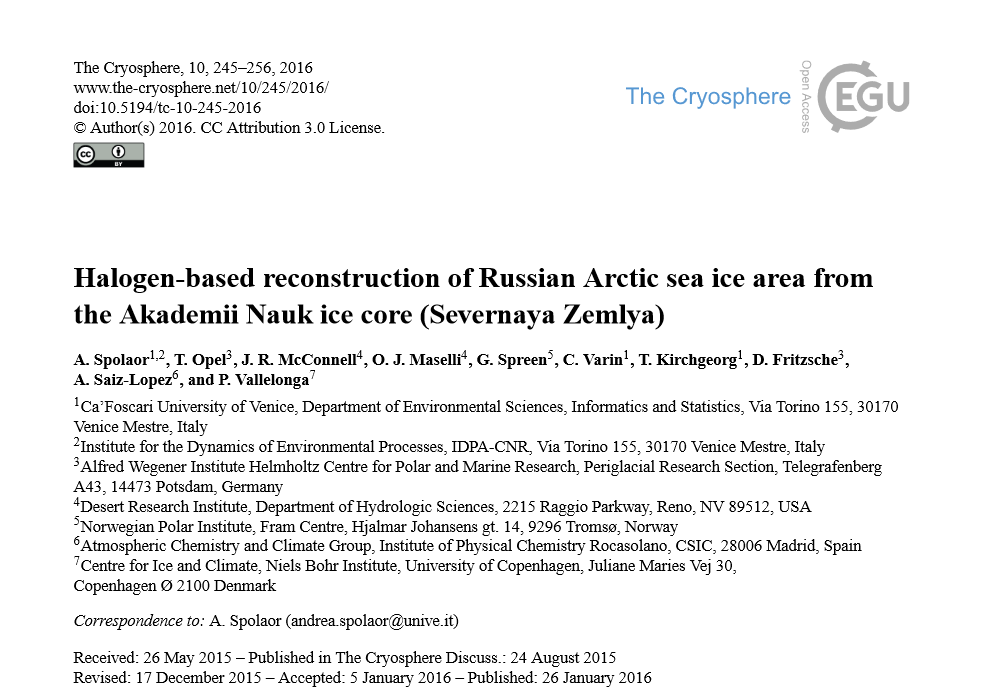A new paper by Spolaor et al. co-authored by ice2ice associate professor Paul Vallelonga finds that halogens are useful for reconstructing sea ice variability in the Arctic.
In a recent study published in The Cryosphere titled “Halogen-based reconstruction of Russian Arctic sea ice area from the Akademii Nauk ice core (Severnaya Zemlya)” it was found shown that halogens as measured in the Akademii Nauk ice core work well for reconstructing the sea ice as observed by satellite in the Laptev sea over the period 1950-1998 AD.
Halogens such as brohmine (Br) and Iodine (I) are strongly influenced by sea ice dynamics. Bromine reacts with the sea ice surface and bromine explosion events take place. This causes the brohmine to sodium sea salt to be enhanced. Thus by determining the excess bromine concentration in the ice core relative to the sea salt sodium concentration a signal of the sea ice can be found for the past covered by the ice core.
Similar Iodine is related to sea ice extent. However the Iodine emissions to the polar atmosphere mainly arise from oceanic biological production and is thus related to the presence of ice-free open-ocean conditions.
The Bromine excess was found to correlate well with satellite sea ice area during spring and summer in the Laptev Sea region, while the iodine mainly correlated with the summer sea ice area.
The full study can be obtained here.
